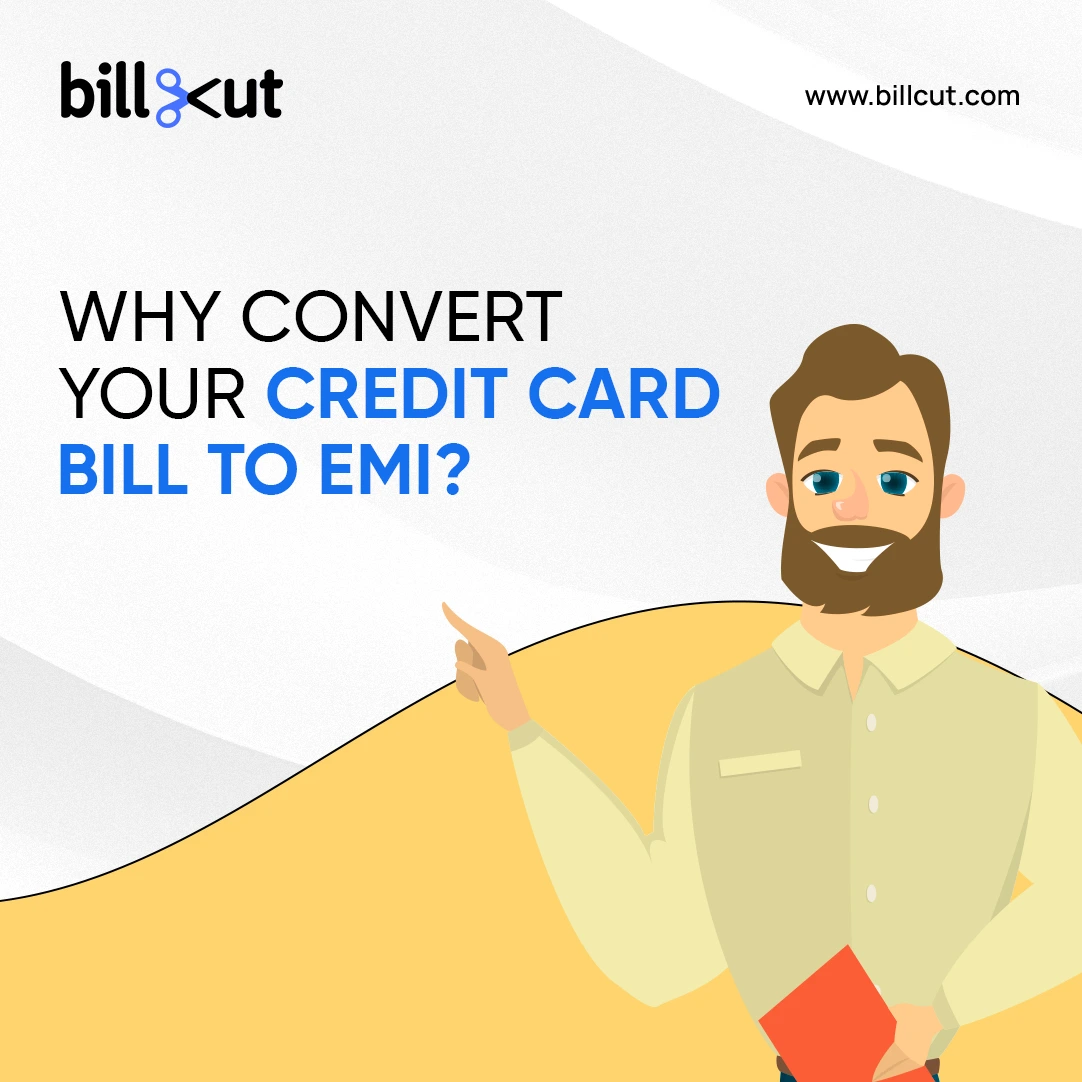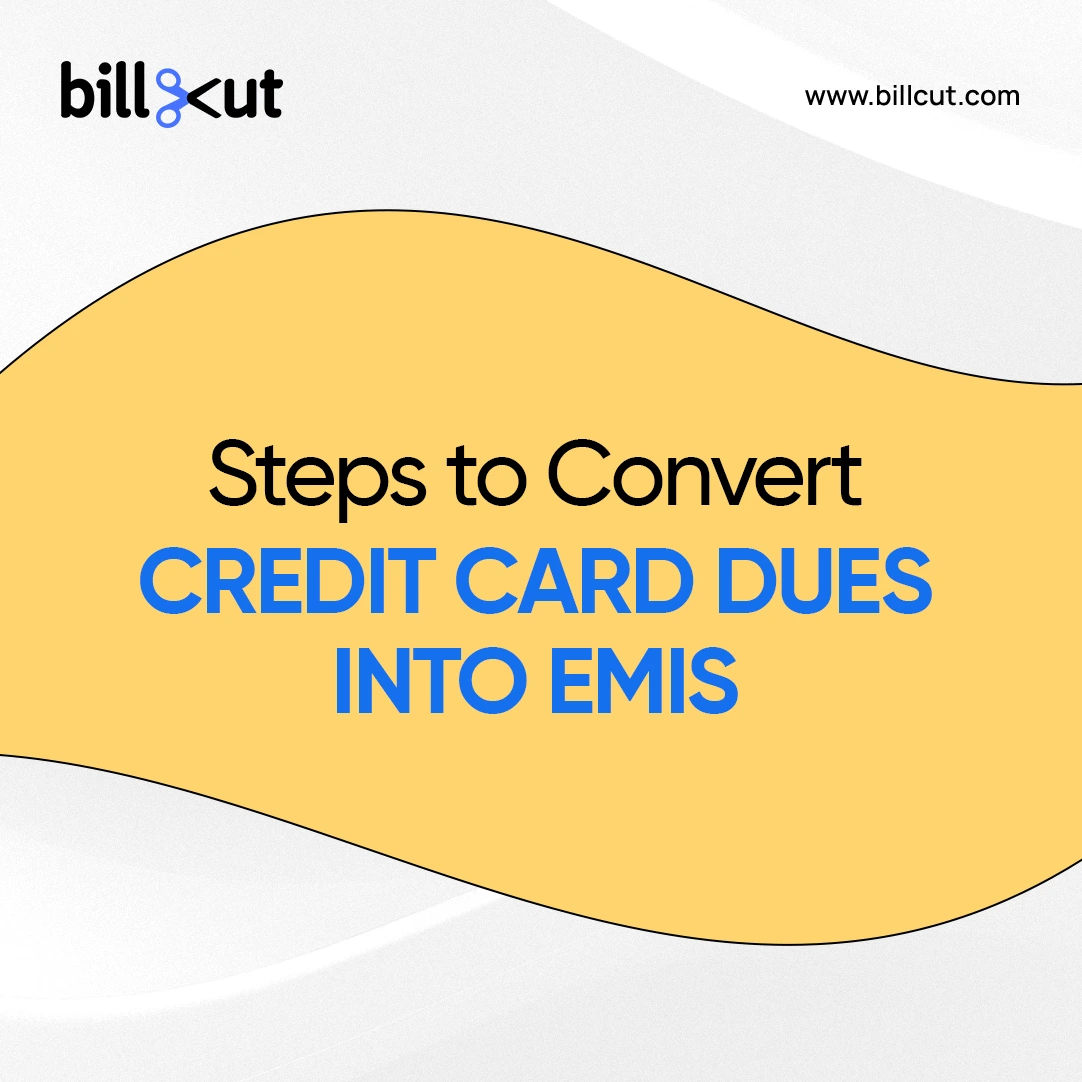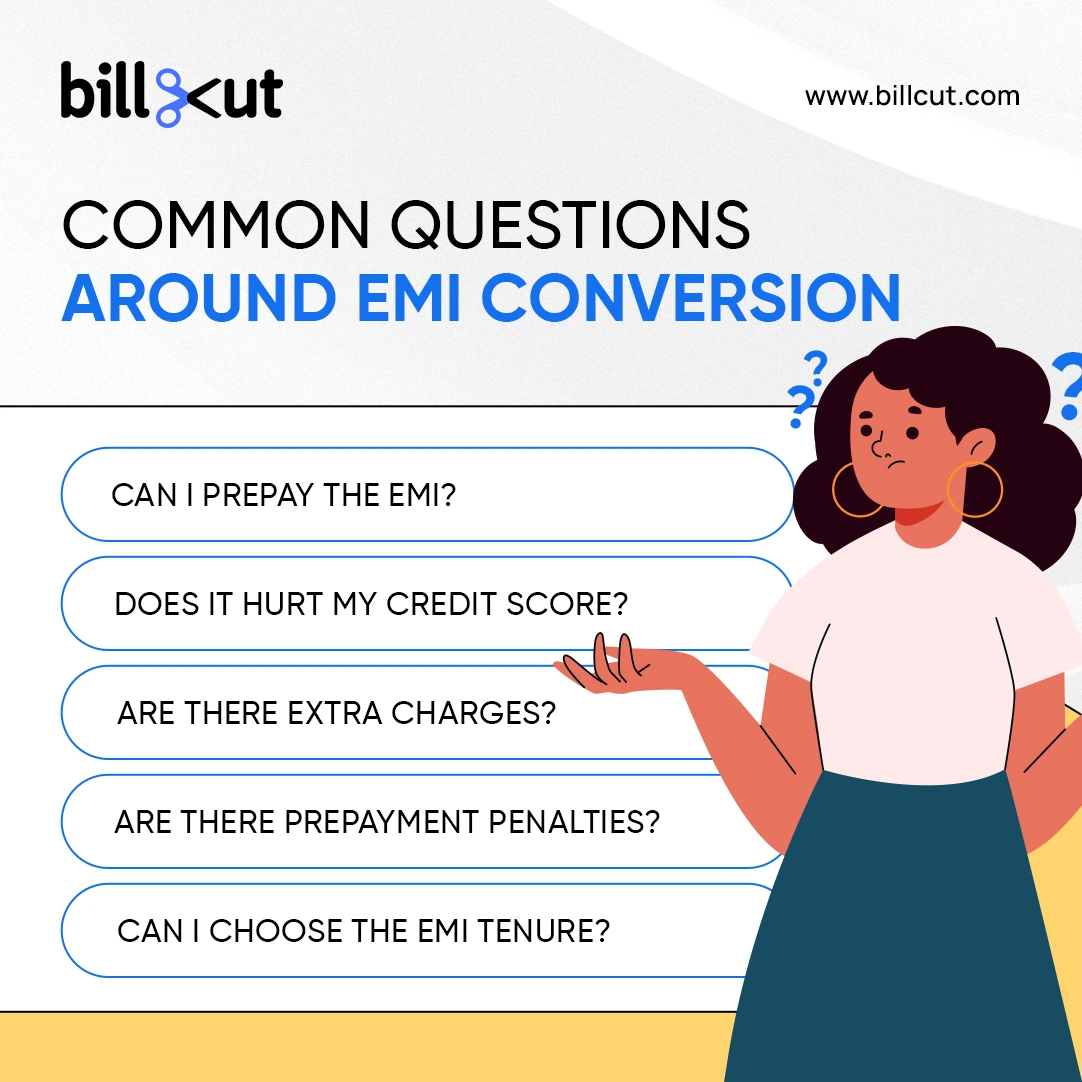Home > Blogs > Blog Detail
.webp)
April 28th, 2025 5 Mins Read
How to Convert Your Credit Card Bill to EMI
Managing high credit card bills can be challenging, especially when dealing with unexpected expenses. A practical solution is to convert credit card bill to EMI, which allows you to break down your outstanding balance into smaller, manageable installments.
This blog will explain the credit card EMI payment process, eligibility criteria, benefits, and strategies for optimizing your repayment. Whether you're looking for credit card debt repayment options or exploring credit card bill management strategies, this guide has you covered.
Index
What is Credit Card Bill EMI Conversion?
Benefits of Converting Credit Card Bills to EMI
How to Convert Credit Card Dues to EMI – Step-by-Step Guide
Eligibility for Credit Card Bill EMI Conversion
Understanding Interest Rates and Charges
Tips for Managing Credit Card EMI Payments
FAQs – Answering Your Credit Card EMI Questions
What is Credit Card Bill EMI Conversion?
Credit card EMI conversion is a feature offered by banks that allows you to repay your outstanding credit card balance in fixed monthly installments (EMIs). Instead of paying the full amount in one go, you can opt for structured payments over a specific tenure.
Definition:Converting a credit card bill to EMI lets you break your credit card dues into smaller, more manageable installments, typically with an added interest rate.
What does paying a credit card bill via EMI mean?It means that instead of clearing the entire bill by the due date, you spread the repayment across multiple months with pre-decided EMIs.
Benefits of Converting Credit Card Bills to EMI
-
Ease of Repayment:
Pay your dues in smaller installments rather than a lump sum.
-
Reduced Financial Stress:
Manage large expenses without straining your monthly budget.
-
Lower Interest Rates:
EMI interest rates are often lower than regular credit card finance charges.
-
Improved Credit Score:
Timely EMI payments help maintain or improve your credit score.
-
Flexible Tenures:
Choose a repayment period that suits your financial capacity, typically ranging from 3 to 24 months.
-
Predictable Payments:
Fixed EMIs help you budget better without unexpected financial shocks.
The biggest advantage is affordability, as it prevents missed payments and associated penalties.

How to Convert Credit Card Dues to EMI – Step-by-Step Guide
Converting your credit card bill to EMI is a simple process. Here's how:
-
Check Eligibility:
Log into your bank’s app or portal to see if your transactions qualify for EMI conversion.
-
Select the Transaction:
Identify eligible transactions or your outstanding balance to convert.
-
Choose Tenure:
Most banks offer tenures from 3 to 24 months.
-
Review Charges:
Check the interest rate, processing fees, and total repayment amount.
-
Confirm the Request:
Submit the EMI conversion request online or through customer support.
-
Track Your EMIs:
Monitor your repayment schedule via your bank's app.
Log in to your account → Select eligible transactions → Choose tenure → Confirm conversion.

Eligibility for Credit Card Bill EMI Conversion
- Customers with an active credit card account.
- A good repayment history and credit score.
- Minimum outstanding balance (varies by bank).
Yes, as long as they meet the eligibility criteria.
What documents are required for converting credit card payments into EMIs?Typically, no additional documents are needed. Your existing credit card profile is sufficient for evaluation.
Understanding Interest Rates and Charges
Interest rates for EMI conversions typically range from 13% to 18% per annum, lower than regular credit card finance charges, which can be as high as 36%.
Additional Fees:- Processing Fee: 1-2% of the converted amount.
- Prepayment Penalty: Charged if you foreclose the EMI plan early.
Banks use the following formula:
EMI = [P × r × (1 + r)^n] ÷ [(1 + r)^n - 1]where
- P = Loan amount
- r = Monthly interest rate
- n = Tenure in months
Tips for Managing Credit Card EMI Payments
- Choose the Right Tenure:
Shorter tenures mean higher EMIs but lower interest costs. Longer tenures reduce the EMI burden but increase overall interest.
- Avoid Missing Payments:
Missing EMIs can lead to penalties and harm your credit score.
- Budget Effectively:
Plan your monthly budget to accommodate the EMI amount comfortably.
- Compare EMI Options:
Different banks offer varying interest rates and terms. Research and choose the best credit card payment plan.
- Consider Prepayment Options:
If possible, prepay the EMIs to save on interest, but check for any prepayment penalties.
FAQ
WE'VE GOT ANSWERS
What is the difference between credit card EMI payment and regular payment?
Regular payment clears the full outstanding amount by the due date, while EMI spreads the payment over months with added interest.
Can I prepay the EMI for my credit card bills?
Yes, but some banks may charge a prepayment penalty.
Does converting credit card bills to EMIs affect my credit score?
No, timely EMI payments can maintain or even improve your credit score.
What happens if I miss an EMI payment for my credit card dues?
Missing payments can result in penalties and negatively impact your credit score.
Can I choose the EMI tenure while converting credit card bills?
Yes, most banks offer flexible tenure options ranging from 3 to 24 months.
Are there alternatives to EMI for managing high credit card bills?
Alternatives include balance transfers, personal loans, or debt consolidation options.
Can I convert cash advances on my credit card into EMIs?
Some banks allow this, but it depends on their policies.
What is the impact of EMI conversion on my credit limit?
The converted amount reduces your available credit limit until fully repaid.

Conclusion
Converting your credit card bill to EMI is a smart way to manage high expenses without overburdening your finances. By understanding the benefits, eligibility, and associated costs, you can make an informed decision.
If you’re looking for personalized repayment solutions, explore platforms like BillCut to optimize your credit card bill management and achieve financial peace of mind.


